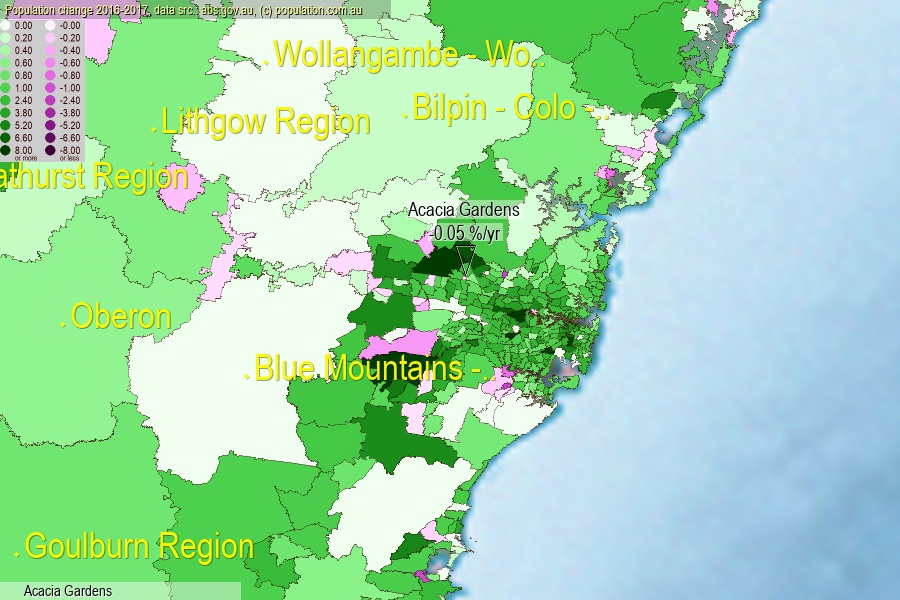 population.com.au
population.com.auLast official estimated population of Acacia Gardens (as Statistical Area Level 2) was 3 960 people (on 2017-06-30)[2]. This was 0.02% of total Australian population and 0.05% of NSW population. Area of Acacia Gardens is 0.90 km², in this year population density was 4 400.00 p/km² . If population growth rate would be same as in period 2016-2017 (-0.05%/yr), Acacia Gardens population in 2025 would be 3 944. [0]



Click to enlarge. Acacia Gardens is located in the center of the images.
Population [people], population density [p./km²] and population change [%/year] [2]
View borders » (new window) [4]
[2001-2002] +20.24 %/Yr.
[2002-2003] +7.80 %/Yr.
[2003-2004] +9.41 %/Yr.
[2004-2005] +9.83 %/Yr.
[2005-2006] +8.03 %/Yr.
[2006-2007] +7.13 %/Yr.
[2007-2008] +4.26 %/Yr.
[2008-2009] +3.24 %/Yr.
[2009-2010] +0.98 %/Yr.
[2010-2011] -0.60 %/Yr.
[2011-2012] +1.39 %/Yr.
[2012-2013] +0.42 %/Yr.
[2013-2014] +0.80 %/Yr.
[2014-2015] +1.08 %/Yr.
[2015-2016] +0.48 %/Yr.
[2016-2017] -0.05 %/Yr.
[0] Calculated with linear interpolation from officially estimated population
[1] Read more about SA2 and Australian Statistical Geography Standard (ASGS) on abs.gov.au
[2] Population data from Australian Bureau of Statistics (Population and density: 2017; change: 2016-2017)
[3] Digital Boundaries: Australian Statistical Geography Standard (ASGS) 2016.
[4] Border coordinates are simplifyed using Ramer-Douglas-Peucker algorithm.